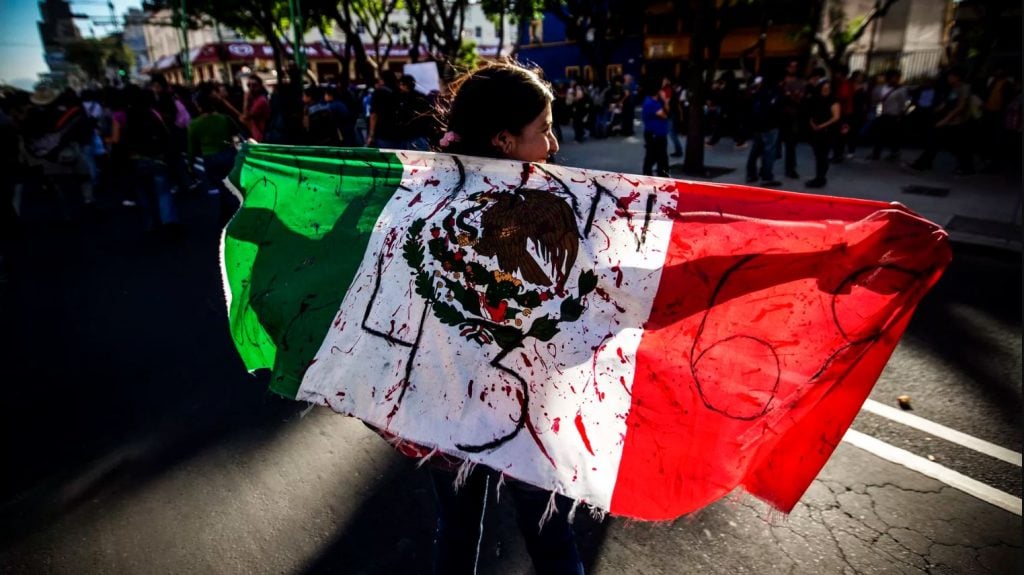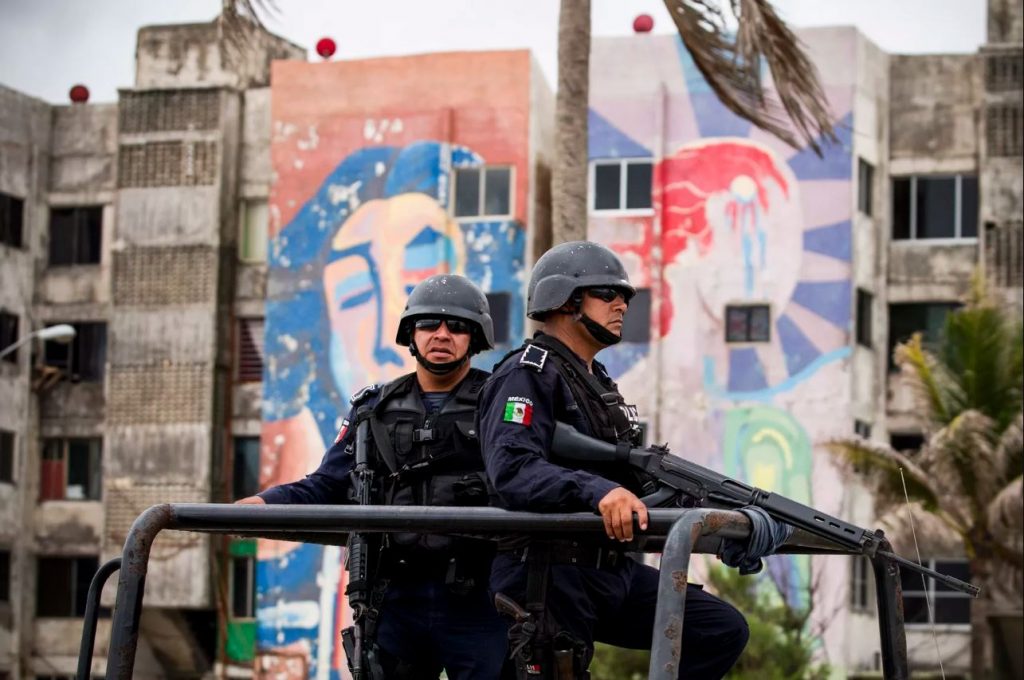Hundreds of people in Mexico are kidnapped every year. And the problem’s getting worse. It’s part of a trend experts refer to as the “democratization” of kidnapping.

David Ramirez, a 19-year-old college student from Mexico City, and his best friend Miguel Angel Rivera, 20, were on their way to celebrate Miguel’s birthday in Zihuatanejo, a coastal village in the Mexican state of Guerrero. They never made it.
Instead, they were nabbed en route by armed gunmen, making them just two of the thousands of Mexicans — rich and poor, young and old — kidnapped each year.
Ramirez was taken first, according to a text message that Rivera frantically sent to a friend. “Call David’s mom! They are putting David in a vehicle,” the message said.
A few hours later, Ramirez managed to contact his sister, Deborah. “Help me! Help me! I’m in trouble,” he pleaded, crying over the phone. Then the call dropped. She called back for hours, receiving no response. Finally, someone picked up. It wasn’t her brother.
“Get me his father,” the voice demanded. “Is this the police?” Deborah asked. “No. We aren’t the police,” the voice on the other side responded. “This is a kidnapping.”
Desperate to get their sons back, the Ramirez and Rivera families made a payment to the kidnappers. David’s family decorated their house with balloons and signs that read, “Welcome Back, David and Miguel.” But they didn’t come back: The kidnappers cut all contact after getting the ransom payment. Five years later, the young men are still missing.
Unfortunately, their story is part of a much larger trend in Mexico, where almost 11 million Americans vacationed last year. Organized crime, like any successful business, adapts to changing market conditions. In Mexico, which is heading toward a pivotal presidential election in July, this has meant a surge in kidnappings over the past decade.
The abduction and massacre of 43 Mexican students in Ayotzinapa, the seizing and murder of two federal agents in February, the kidnapping of three students by a group posing as police in March, and the disappearance of a politician’s sister in a town just outside of Mexico City in March are the most recent high-profile examples of a criminal business strategy that has ballooned over the past decade.
Kidnapping surge
In 2013, a record 1,700 kidnappings took place, according to data from the Mexican National System of Public Security (SNSP). Kidnappings fell briefly thereafter, dipping to 1,069 in 2015, but they are starting to climb again. Nearly 1,200 kidnappings occurred in Mexico last year. Between January and March 2018, almost 400 people were kidnapped.

The kidnapping surge in Mexico is fueled in large part by the insatiable US demand for drugs. Mexican criminal organizations require extensive personnel and vast caches of assault rifles and other weapons — 70 percent of which come from the US — to defend their “plazas” (strategic points along the drug supply chain) from other gangs and from the Mexican police and military. It’s a costly part of the drug trade, financially as well as in lives lost.
Mexico has hundreds – and possibly thousands – of gangs of organized kidnappers
Beginning around 2006, criminal groups began to use kidnappings — and the ransom money they got from desperate families — to help fund those activities, according to Víctor Manuel Sánchez Valdés, a research professor at the Autonomous University of Coahuila, Mexico. “They had to find other sources of income, which gave the hitmen in these groups carte blanche to participate in activities like kidnapping and extortion,” he said.
And Rodrigo Nieto Gomez, a research professor at the Naval Postgraduate School in California, told me that the skills drug dealers use in their daily lives work for kidnappings too.
“Basically, if you know how to run a drug smuggling operation, you know and own 90 percent of what you need to be a secuestrador [kidnapper],” he told me.
Kidnapping is booming in Mexico, but the victims aren’t who you’d think
Kidnapping has been a problem in Mexico for decades, but it’s gotten much, much worse in recent years. Between 2000 and 2006, there were about 400 kidnappings a year, which, while still a lot, pales in comparison to current numbers. After 2007, as organized crime fragmented and groups faced more competition from rival organizations, abductions increased by almost 200 percent, according to SNSP data.
In the ’90s, most kidnapping gangs were made up of police officers, both active and retired, who targeted the affluent citizens of Mexico’s business and political elite. The high-profile kidnapping in 1994 of Alfredo Harp Helú, a Mexican entrepreneur whose family paid $30 million for his release, typifies this trend.
But for many criminal groups, the risks inherent in these kidnappings — the publicity and police attention they attracted — often weren’t enough to justify the reward.

As a result, criminal groups, beginning in the early 2000s, shifted their efforts toward the middle and lower classes. Criminal groups earn less per victim but can carry out many more kidnappings without attracting the attention of the authorities, according to Juan Francisco Torres Landa, a consultant for the organization Mexico United Against Organized Crime.
It’s a trend that experts refer to as the “democratization” of kidnapping.
Kidnapping methods have also changed. Secuestro exprés, or “express kidnappings” — in which victims are taken for a short time until small payments are met — have become more common in recent years, according to Valdés.
“There are cases now where the rescue of a victim only costs $500,” said Javier Hernandez, an official with the United Nations Office of Drugs and Crime in Mexico.
Express kidnappings made up 66 percent of all kidnapping crimes in 2016, according to the National Institute for Statistics and Geography in Mexico.
“Not only the rich and famous were vulnerable but also the majority of the population,” Gomez, the professor at the Naval Postgraduate School, told me. “They democratized kidnapping from something that only happens to the rich to something everybody should fear.”
This is why Mexico’s kidnapping epidemic is getting worse
Mexico’s kidnapping problem was bad enough when most of the crimes were being committed by a handful of cartels. But now that many of those criminal organizations have begun to splinter, there are more groups vying for a piece of the drug trade, which means that they have more costs to meet. Abducting people and demanding ransom money is one way to do that.
From about 2007 to 2016, the number of criminal groups in Mexico rocketed from six to 400, according to Mexico United Against Organized Crime. A large part of this can be attributed to the aggressive security policies of former Mexican President Felipe Calderón, whose “Kingpin Strategy” — which aimed to arrest various cartel leaders — disrupted what was once a relatively peaceful balance of power between the larger cartels.
Gomez said there are now hundreds, and possibly thousands, of gangs of organized kidnappers.
The Mexican government has been largely unsuccessful in their efforts to reduce kidnapping, and a large part of this failure can be attributed to high levels of official corruption. Since 2006, Mexico has dropped significantly in Transparency International’s Corruption Perception Index, moving from position 70 to 135. Police are often involved in the kidnappings, either by conducting them jointly with criminal groups or by taking their cut and looking the other way.

“In Mexico, it is common for police officers to be directly involved in crime, any crime,” said Gomez. According to a study by the National Commission on Human Rights in Mexico, 85 to 95 percent of Mexicans believe the police are corrupt. All of which means that many kidnappers feel, rightly, that the odds of police having the skill or inclination to come after them are pretty low.
Only “1 percent of all kidnappers are captured and carried to justice,” said Torres Landa, the Mexico United Against Organized Crime consultant. “There is a huge incentive to participate in these activities.”
The families of many of Mexico’s missing are struggling not to lose hope
Five years after the disappearance of Ramirez and Rivera, the investigation into their kidnapping has gone nowhere. “[The authorities] say they don’t have enough information,” David’s sister, Lourdes, said.
But Deborah, Ramirez’s older sister, believes the reason is more obvious — and more troubling.
“The authorities are colluding with the kidnappers,” she said. “They know where they are. But instead of launching a raid at that location, they launch a raid at some other random location. And they tell us lies. They say, ‘We haven’t been able to investigate because we haven’t had an internet connection in seven months’. And, ‘We couldn’t get a warrant because our printer was broken.’ It’s a joke.”
Still, the sisters hang on to their hope that Ramirez and Rivera are still alive. With Mexico’s kidnapping problem only getting worse, more and more families are experiencing the pain of seeing a loved one disappear — and facing up to the grim reality that they may never come home.
That is terrifying and heart-breaking. Prayers for them!












[…] http://strangesounds.org/2018/05/hundreds-of-people-in-mexico-are-kidnapped-every-year-and-the-probl… […]
Most of the horror movies are what really happening with reptilian cannibals. My favorite movie is Midnight Meat Train. This movie explains how train system including subway system abduct humans on board. Suddenly they switches the train rout to their secret underground bases. People on board on that train are slaughtered and eaten by reptilian cannibals.
Midnight Meat Train – 6. “Decapitation”
https://www.youtube.com/watch?v=E_O2-6-KwwM
The second movie is Hostel. This movie explains how they torture young people before they kill so that they can get maximum adrenaline in the victimes’ blood that excite reptilians or Jews like taking drugs. Motels, hotels, hostels, B&B etc… might be the traps to get you as their food.
Hostel (4/11) Movie CLIP – Hall of Horrors (2005) HD
https://www.youtube.com/watch?v=qSmjZYAZQp0
There are many movie examples they are showing us how they abduct human as their food, but the last movie I recommend is The Bone Collector. A taxi in New York City might abduct you.
“Stop the goddamn car!!!!”
https://www.youtube.com/watch?v=HOHVh4KI8gc
This movie reminded me when I was in New York City 30 years ago. I got on a taxi and asked him to take me to a cheap hotel. When I arrived the place where he took me, I started to climbing the stairs to the hotel. Then a black woman was sitting on the stairs, and told me “You cannot stay here! Here is dangerous!” Then I asked her “Then where can I stay?” She just pointed to a really expensive hotel on a main street. I was confused for a while. But I decided to follow her instruction. If I use the hotel the taxi driver took me, I might have been dead by then.
Thanks,
I will hqve a look at them!
I know a victim whose grand sons and daughters have been abducted by Family Protection Service. Her name is Fueko who is Japanese who cannot speak English very much even she has been in the US for more than 30 years. One day, Family Protection Service came with a Japanese translator.
They said “Your daughter is in a jail because of her drug problem. You must be tired to take care of all your grand children. Why don’t you give us them, even temporarily so that you can have a break. If you can give all your grand children, we guarantee you that we can take them to university for higher education. Do you have confidence that you can give them such a higher education in a university? ”
Then she signed the paper they brought without second thought. they have taken all her grandchildren, 2 boys and 1 girl. After that, she cannot trace them at all. Even she does not have the right to find out they are still alive or not. Basically after she signed their paper, she has given up all the right including the right to know where they located and whether they are still alive or not. Probably you cannot believe this reality. But this is the reality that this system including governments are collaborating with reptilian cannibals for their benefit. Yes, we humans are their food and slaves. If you are not smart enough, or if you do not think in your brain and trust those “Authorities”, they steal your children and much more legally.
This human abductions, especially abductions of children and young people are quite common in US, too. All the police and agencies are notified that those abductions exist so that the police do not need to make a case for those abductions. They don’t tell you that US military has a secret division in order to abduct human children for Jewish blood sacrifice (Yes, you can call them vampires = reptilian hybrids), or for reptilian cannibals living underground bases. Those abductions by military paid by our tax are called Milab (abbreviation of Military Abduction).
Listen to a rabbi, Abraham Finkelstein.
“Human cattle are so stupid that they cannot believe what I said, or they do not want to believe it. Meanwhile, we are having fun during our Pass Over (Jewish Holiday). We abduct 300,000 children only in this country (the US) every year. Then take them to our synagogues, cut their throat, drain their blood, mix with Pass Over bread, eat them, take those dead bodies to slaughter houses, and butcher them, mix with some other meat, make hamburger patties, sell them at MacDonald.”
Start at 39:30 in the following video
https://www.youtube.com/watch?v=eh-3XUfuWq0
They also use Child Protection (Abduction) Service to abduct children from family directly and legally. The reasons are vary from parents’ fighting to parents Illiterate. Their objective is to get incentives that is $6000 per a child abduction paid by the Government. Even they can make up the fake reasons to abduct children. Usually teachers in school systems involve this procedure. Those teachers as informers to Child Protection Service might be able to get a quite good money incentives, too.
Strange Weather Events are Happening Worldwide!!! 10-12 May 2018
https://www.youtube.com/watch?v=A6i_da-Oyw0
“In Mexico, it is common for police officers to be directly involved in crime, any crime,”
What a synchronicity! When a street performer with puppets finished dancing Michael Jackson’s “Who’s bad?”, 2 corrupted policemen were passing beside him.
https://www.youtube.com/watch?v=eW-0oR-nB0U